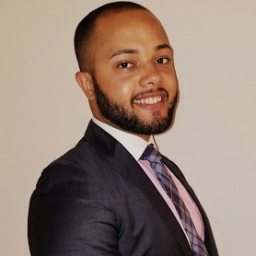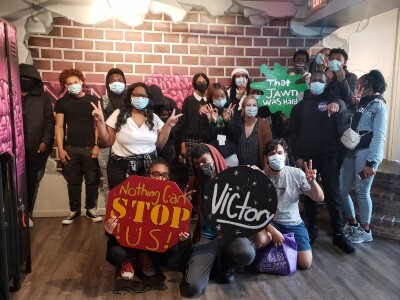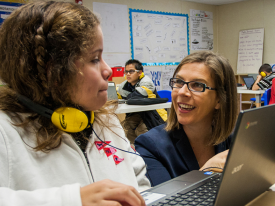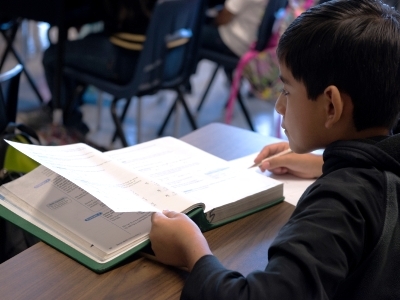Self-Actualization and Organizational Development
Topics
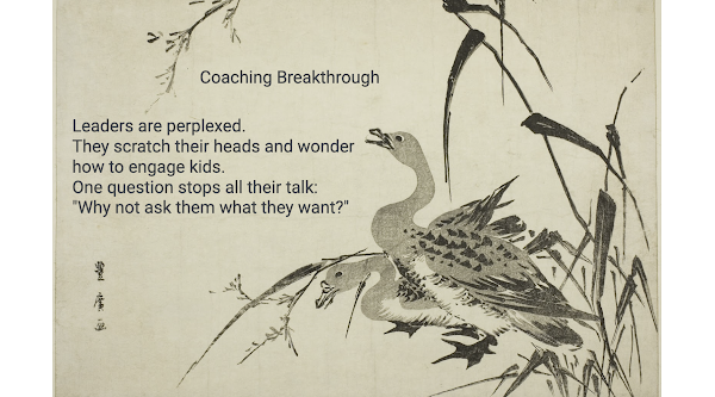
Together, educators are doing the reimagining and reinvention work necessary to make true educational equity possible. Student-centered learning advances equity when it values social and emotional growth alongside academic achievement, takes a cultural lens on strengths and competencies, and equips students with the power and skills to address injustice in their schools and communities.
NGLC's Evolving Approach to Evaluation Growth, Part 3
In place of an employee performance review process, NGLC uses a “Growth Journal” to document each team member’s growth journey. We use this tool to help us shift toward an Indigenous worldview of individual and collective growth in our organization.
Educator Jane Elliot has repeatedly said that “an educator is one who is engaged in the act of leading people out of ignorance.” As a former school leader and lifelong educator, I see NGLC’s journey of rethinking our human development model similarly. The model we are moving to is deeply rooted in liberation. It allows for personalization that seeks to capture each individual’s most prominent goal(s) as we meet our organizational mission and vision. Eighteen (18) months ago the NGLC team decided to go on an internal journey of growth, one that put into question the more dominant/western White culture worldview approach to performance evaluations. We are moving toward an Indigenous worldview of our individual growth. In this article, I take you into NGLC’s “Growth Journal,” which documents each team member’s growth journey.
The Components of Growth
First, we sought to define what is deemed a way of interpreting an Indigenous worldview perspective and how that relates to our personal and organizational growth. We offer the following definitions below:
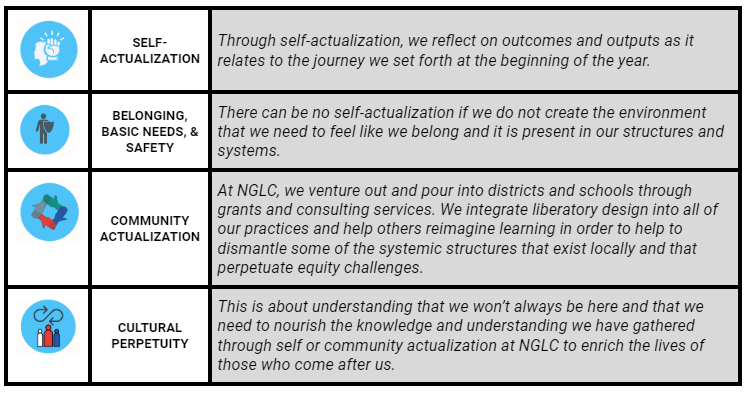
Both “Self-Actualization” and “Belonging, Basic Needs, & Safety” are components that relate to the self. We believe, like our First Nation brothers and sisters, that everyone in our organization comes to our organization already whole, with a full set of abilities. Our job as an organization is to give everyone the space to be and to engage in wildly important goals (WIGs) that they choose. By creating space for people to come as they are and to work on something that is meaningful to them is the highest possible way to express liberation. This is also the best way to position each individual in our organization to lead within and outside of our community.
In addition, we know, understand, and accept that people move on from organizations for a variety of reasons. Much like the First Nations perspective, we believe in the passing down of knowledge held by the individuals that have come and gone through NGLC’s virtual doors. We use this passed-down wisdom to continue to enrich ourselves personally and organizationally.
In essence, we all have aspirations and needs for self-actualization and it is up to us to acknowledge how our aspirations and needs relate and then create space to address them. Whether we address them simultaneously, in a non-sequential order, or even in sequential order (as Maslow’s hierarchy of needs suggests), we see each individual being deeply rooted in our community since “a community is capable of meeting multiple needs in parallel.” (Ravilochan, 2021) In this way we lead to cultural perpetuity that allows us to safely pass down wisdom from one generation of NGLC’ers to another.
The Stages of Growth
Our friend “Co” allows us to see this entire process of growth as a shared one. Co, as my co-director Andy explained it, is the way we inherently function as an organization—collaboratively. Acknowledging our shared responsibilities, we have established triad meetings between each individual and NGLC’s co-directors, Andy Calkins and me. Held throughout the year, the triad meetings give each individual the best possible opportunity for self actualization and for community actualization.
Consider the following stages of NGLC’s growth process (again, these are not necessarily linear and we are constantly noticing and reflecting to ensure that the wildly important goals each individual has selected are the ones they want to continue with in any given year):
Co-Empathize
We are working diligently to ensure that we implement liberatory design practices across all that we do at NGLC. This includes our growth oriented approach, which essentially allows us to “see” each other in the workspace acknowledging our lived experiences and tackling complex systemic structures that have been in place for ages in education. One of the core beliefs of liberatory design is that “equity-driven designs require equity and complexity informed processes.” Our learning is not linear and the work that we do becomes extremely complex when adding a layer of culture and the context of schools we work with to it. And because we work with so many different types of schools and will continue to expand on that diversity, it is important that we practice what we are delivering to schools and districts.
Co-Plan
Part of our new co-director structure is acknowledging that great work does not happen while working in silos. This is also true of our growth oriented process. We believe that in order for us to see growth on an annual basis, both the organizer(s) of growth [generally, a supervisor or advisor] and employees must co-construct the expectations so that both have equal stake and investment in the goals being developed. Equally important is the ability of the organizer of growth to see the individual goals and to help grow connections across the organization.
Co-Monitor
Employee goals are essentially driven by the work that they do on a daily basis and with our contributions to the strategic plan work we do as a collective team. As a base, each staff member engages in a beginning of the year conversation with their organizer(s) of growth to set goals and quarterly check-ins for their goal progress. These quarterly check-ins will formally be part of the growth journal, which will serve as a living document for gathering notes and resources. In this way, we build equity from within and allow everyone the opportunity to have the same amount of thinking space to be able to contribute feedback on that journey. This also sets a minimal standard amount of feedback that organizer(s) of growth must provide in order for there to be meaningful growth for the employee.
Co-Review
All employees have an end of year official growth meeting meant to summarize and analyze progress toward their goals and the organization’s goals. There are no ratings for this process and that is intentional. There is no “summary year-end performance review” by an employee’s organizer of growth because the work, the conversations, and the feedback have taken place consistently all year long. We ground ourselves on the actual growth process and meet frequently enough to determine when work around a specific WIG is complete.
Our friend “Co” has undoubtedly given us an opportunity to actualize NGLC’s community from the perspective of power with and not power over any individual in our organization. I believe that this transformation of power is grounded on human-centered values, where we seek liberatory collaboration, and where we embrace complexity by bringing each individual's strengths to power. Together, we landed on a process where there are no ratings because those scores are subjective, the value of the process is not attached to any merits and grounded on an individual’s journey of self-actualization giving each of us a sense of purpose. It is a process that is deeply personalized and where all individuals have a say in every aspect of the process creating an ideal work ecosystem for all.
The Structure of Growth
By the end of our first year piloting this growth journey, in December 2022, we all felt like we had done so much reflecting that, in some cases, it became repetitive and redundant. We shifted from meeting monthly to meeting quarterly, which gives us just enough time to reflect on any given goal and to actually see some growth.
If you are considering moving from evaluation to growth, you must remember that growth processes are not about a “gotcha” gimmick and the structures of conversations should not come as a surprise to anyone within an organization. Structures should help give an individual the opportunity to foresee the types of questions an organizer of growth might ask as well as other questions that can help shape the conversation.
At NGLC, all reflections are written in the growth journal and the conversation structures for each triad meeting throughout the year are already embedded into the journal. For each goal there is an opportunity to discuss successes and opportunities and space to link resources that may help to explain one's journey.
At the end of the year, each individual is asked to think, feel, and act creatively in a presentation of learning about their growth. The following mediums are given as possibilities for creation:
- Write an “I am” poem
- Design a social media web post series to highlight important moments in your journey this year
- Create an image using a line to chart your emotional journey as you tackled each of your goals
- Develop a visual character sketch of yourself that will allow us to see your development
- Create a webpage to outline the story of your 2023 year
- Create a self-portrait that explores some of your successes and challenges from the year
- Write about it using a jump-off line and repeating those lines (think of it as a poem that uses anaphora as a literary element)
- Something of your own choosing
In the spirit of co-creation, it is important to provide enough possibilities to spark imagination, but also leaving space for individuals to venture into something of their choosing. After all, we might be limited by our own experiences and someone might have an even better way to represent their growth. Consider the following models that came out of our pilot growth journey experience:
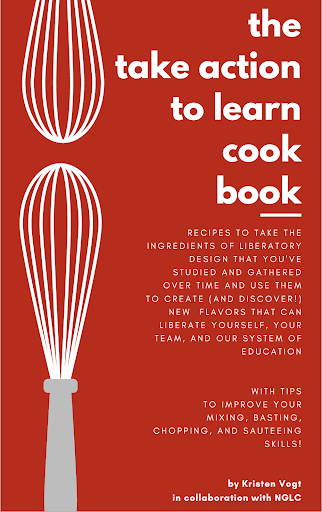
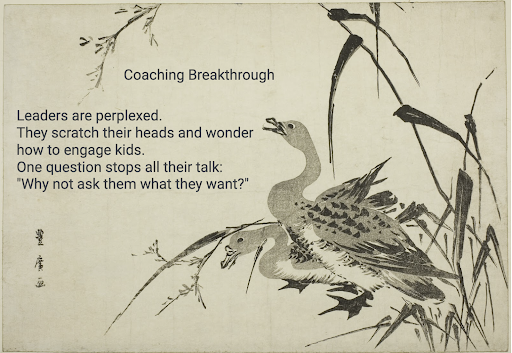
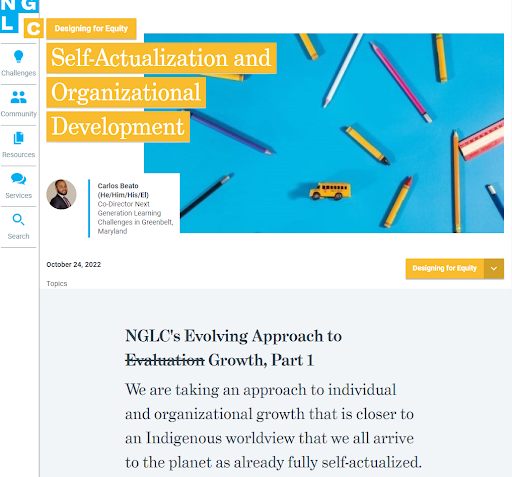
NGLC’s Growth Journey Continues
Shifting to this growth model has not been easy. Everyone in our organization has had to shift our belief systems on what growth should look and feel like. As you can see from the presentations of learning, we all bring unique skills and dispositions to this work. We embraced each individual style to leave something behind in cultural perpetuity for NGLC’s future generations.
In shifting our model, we now have a far more informative system. This system allows us to come in as we are and, as a result, helps us to create the community we envision for our organization. I offer these first account takes from former and current colleagues who experienced the impact of our shift, even in our pilot year:
“Biggest difference is I feel I am initiating the places where feedback goes. It is not a ping pong of back and forth. We use the reflection process to actually have a conversation in person but you also then give me written feedback. It is more of a supported growth orientation. It is a more generative and supportive approach. The context surrounding us and our ability to support growth because of the fact that we are at-will employees.”
“Because it is learning focused it is a much more vulnerable experience and there are certainly more touchpoints and keeping the goals alive in ways that we didn’t before. It feels like it’s our way of really trying to be a learning organization and without the symmetry how do we live out the different experiences that we like to see in districts? I’ve experienced it in a much more vulnerable way and appreciate the ongoing feedback and input and perspectives.”
How are you challenging yourself and your respective organizations to see growth differently? What parts of you are you sacrificing in spaces that do not affirm who you are and what you bring to the table? Take a look at our growth journal template in its current state and use it to spark new ideas in your own work (you will be prompted to make a copy)
Learn More
Read Part 1 and Part 2 for more about NGLC's approach to individual and organizational growth.
Image at top by an NGLC staff member.

